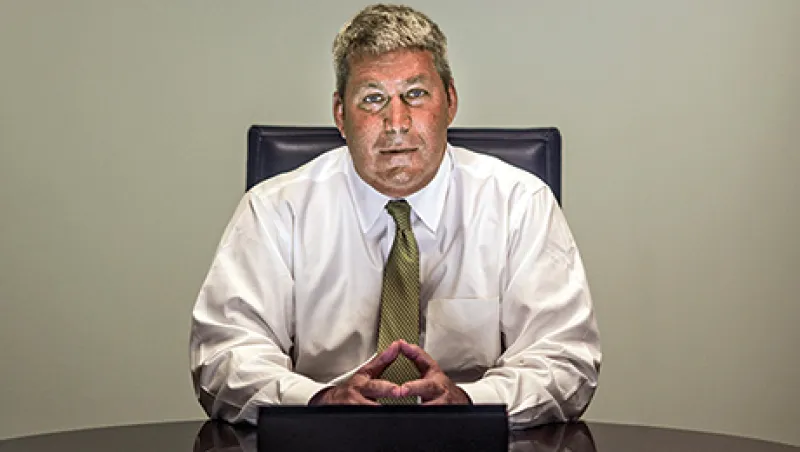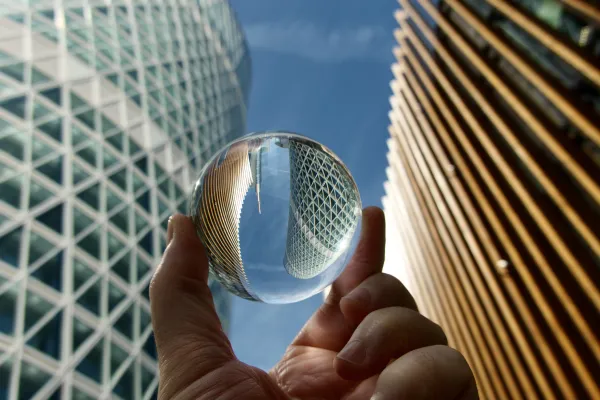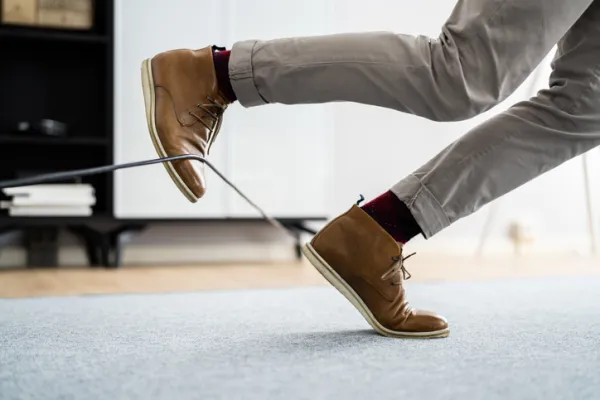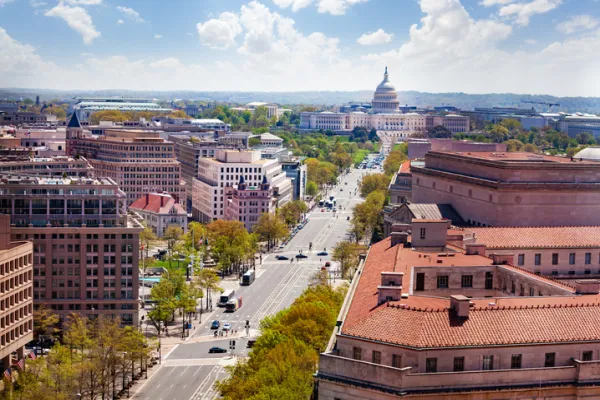J. Michael Pearson might seem an unlikely revolutionary. The 55-year-old CEO of Quebec-based Valeant Pharmaceuticals International spent more than two decades as a consultant at McKinsey & Co., which has long been considered the Goldman Sachs of its industry. Although consultants have a reputation for being conservative with their advice to blue-chip corporate clients, the Canadian-born Pearson has always said exactly what he thinks. That bluntness ultimately helped him land his current job.
Pearson, who moved to New Jersey with his family when he was 12, studied engineering as an undergraduate at Duke University and got his MBA at the University of Virginia’s Darden School of Business on a full scholarship before joining McKinsey in 1984. In 2007, after running the company’s global pharmaceuticals practice for more than a decade, he got a call from Robert Ingram, former CEO of U.K. drug giant Glaxo Wellcome (now GlaxoSmithKline). Ingram was on the board of a small California specialty pharmaceuticals company called Valeant that was floundering, and he asked Pearson to come up with a solution to fix it.
At the time, most drugmakers followed the fully integrated approach of Big Pharma, whose operations span everything from drug discovery and clinical trials to manufacturing and marketing. Pearson came back to Valeant’s board of directors with a very different model. He suggested that the company reduce the number of therapeutic areas and geographies in which it operated. He also advised Valeant to dramatically cut what it was spending on R&D and instead deploy that capital to buy drugs already on the market in areas like dermatology that didn’t compete head-to-head with Big Pharma.
The board liked what it heard but struggled to find a CEO to execute the strategy. Eventually, it reached out to Pearson. “Normally, I wouldn’t have had that chance because it was such a messed-up situation,” says Pearson, who had never heard of Valeant before Ingram’s call. “And normally I wouldn’t have met with them because I was on the board of McKinsey and getting paid quite well. But in the end I made the decision to try a second career.”
Pearson became Valeant’s CEO in February 2008 and set about implementing his plan, exiting therapeutic areas and geographic markets, cutting R&D and other expenses, and making small acquisitions. In 2010, Valeant paid $3.2 billion in cash and stock for Biovail Corp., an Ontario-based pharmaceuticals company specializing in neurological treatments. The deal was structured as a merger of equals, with Valeant becoming a Canadian company. Two years later the drugmaker moved its global headquarters to Laval, a small town outside Montreal.
During his tenure as CEO, Pearson has overseen more than 50 acquisitions, growing Valeant’s annual revenue tenfold, to more than $8 billion this year. In April, Pearson announced Valeant’s biggest potential deal yet: a $53 billion unsolicited cash-and-stock bid to purchase Irvine, California–based Allergan, the maker of Botox. To get the deal done, Pearson has teamed up with activist hedge fund manager William Ackman, whose Pershing Square Capital Management owns 9.7 percent of Allergan. “Mike is an intensely focused, bottom-line-oriented, unbelievably hardworking guy,” Ackman says. “He’s absolutely transforming the pharmaceuticals industry.”
The Valeant-Allergan takeover battle has been messy. In May, Allergan’s board rejected the offer, which Valeant has since increased twice. Allergan has filed a lawsuit against Valeant and Pershing Square in U.S. District Court, alleging that the two have broken insider trading rules. In late August, Valeant and Pershing Square filed a suit in the Delaware Court of Chancery requesting that the judge enforce a rule requiring Allergan to hold a special meeting of its shareholders, at which they will try to replace a majority of its board members. (The meeting is currently set for December 18.) Earlier in August Institutional Investor Editor Michael Peltz met with Pearson at Valeant’s U.S. headquarters in Bridgewater, New Jersey, to discuss the company’s corporate strategy and its bid to buy Allergan.
Institutional Investor: How did your experience at McKinsey shape your strategy at Valeant?
Pearson: Our strategy is basically the education I had through McKinsey. When I first started working, it was sort of the golden age of pharmaceuticals, where every company more or less had the same strategy, which was to invest heavily in R&D. It was almost like a shots-on-goal mentality: The more you spent, the more you were undoubtedly going to find compounds that you could bring to the market and that would turn into large drugs. The whole industry actually beat the market for decades. At McKinsey pharmaceuticals was one of our biggest industry groups. Drug companies could afford to get outside advice because they made so much money. But then the model stopped working.
When was that?
The ’90s, for sure, and the 2000s in terms of R&D productivity.
How does your strategy compare with that of other drug makers?
We’ve tried to come up with a slightly different operating model, based on studying the larger pharmaceuticals companies. We’ve tried to avoid the things that they were best at or where they’re most focused, so we’ve avoided going for blockbuster drugs, because all the Big Pharma companies are. We’ve said you can make a lot of money on smaller drugs, and guess what? No one’s chasing them. So if you go and try to buy a smaller drug, it’s a lot cheaper proportionally than a larger drug because those aren’t priorities for these big companies. We focus on things that are a little out of favor with Big Pharma companies. That’s why we got into dermatology. A lot of what we bought was sort of castoffs of Big Pharma companies.
Most pharma companies develop a product and try to sell it in every country of the world. We don’t. We focus on geographies that are growing, where health care is growing. So we don’t focus on Western Europe or Japan. We focus on some of the emerging markets and that type of thing. Every pharma company is looking for the products with the longest patent life, to get that monopoly. We actually focus on products that don’t have patent lives, like OTC products and some of these medical devices. Many of our drugs are off patent; we’ve done something to them so we can still sell them as branded generics.
When you arrived at Valeant, the company had been losing money for several years. How did you fix it?
The first thing we did was just simplify the company. It was an $800 million-in-revenue company that was operating in over 100 countries. When I went to the first board meeting, they had the flags of all the countries, and it was like the United Nations. They had a very small dermatology business, neurology business and hepatitis business. They were too small to have any one of those businesses — let alone three — so for the first seven or eight months we just cleaned it up. We de-emphasized neurology. We partnered our biggest product with Glaxo so that they could take that development. We got completely out of hepatitis. And we shrunk ourselves to a $600 million company, but rather than losing a ton of money a year, we actually made some. We made a decision that dermatology was going to be our primary emphasis. So we bought Coria Laboratories, which was a $38 million top-line company; today it is almost $200 million. We bought a California company called Dow Pharmaceutical Sciences; it was started by a guy named Gordon Dow and was more of an R&D company. We just launched Jublia, which hopefully will be our largest product by far, which came from Dow.
How did you come up with the idea to merge with Biovail?
It was part of our first presentation to the Valeant board as a consultant. The plan for the company was: Let’s do things efficiently, let’s focus on a few countries and a few specialty areas, and let’s get our market cap up so we could do a merger with a company like Biovail that had a great tax rate. Early on we had identified tax rate as an important part of the strategy given that the pharmaceuticals industry is such a high-margin business.
How was the Biovail deal structured?
It was a merger of equals. We paid a 15 percent premium because we felt it was critical that we had the majority of the board members and that the merged company adopted our strategy. We’d had a pretty good story up to then of how we had created value, but it was a long negotiation and it took a while once we merged. Their CEO became the chairman of the board; I became CEO. But four months later he left. We couldn’t coexist, so the board had to make a choice.
What was the genesis of the Allergan deal?
We spend a lot of time with shareholders. We realize we don’t own the company; our shareholders do. That’s one of the reasons we invite shareholders to meet with our board without management present. And consistently a lot of our shareholders — who actually happen also to be Allergan shareholders — said: “You need to put these two companies together. This makes all the sense in the world.” So that’s what we’re trying to do now.
Valeant first proposed a merger with Allergan in 2012?
Yes. I went and met with [CEO] David Pyott. I knew him from when Valeant was in California. He was very polite and respectful. A couple weeks later he called me back and said, “I took it to the board, and we’re going in a different strategic direction.” I said: “Okay. That’s fine. Thank you.”
So we moved on. One of the more significant acquisitions we’ve made since then was Bausch & Lomb, which convinced me further that putting ourselves together with Allergan would make sense. At Bausch & Lomb we found a company that was sort of organized exactly like Allergan was in terms of its global functions. We were able to get Bausch & Lomb and streamline it and actually accelerate its growth. So then the synergies and strategic fit with Allergan became even more perfect, because we’re both in derm, we’re both in aesthetics, we’re both in ophthalmology, and we’re both in neurology. And our products tend to have very little overlap. Again, we thought there was a real opportunity to take yesterday’s model and turn it into tomorrow’s model. And quite frankly, no matter what happens, in a sense, they’ve sort of self-verified that, because their new stand-alone plan gets rid of a third of their R&D people (see also “Valeant Pharmaceuticals’ Acquisitions Should Please Jeff Ubben”).
Why did you get involved with Bill Ackman?
I thought it would be very helpful to have a third party. Some people like Bill Ackman, some people hate him, but most people think he’s reasonably smart and that his firm knows how to do due diligence. So I thought that might give some more credibility to our currency, because we’re a hard company to understand from the outside — we have so many little products, and we’ve grown so quickly.
What was Ackman’s reaction when he found out that your target was Allergan?
Pretty positive. He then did some research on them, and he came back much more positive. He thought from a governance standpoint it was one of the least governance-friendly companies out there. Its [selling, general and administrative] spend, if not the highest in the pharmaceuticals industry, is the second highest. And this is a company that has been quite vocal that they were spending $1 billion on R&D and they were looking to increase that. So they seemed like the perfect target.
Now, to give Allergan credit, they’ve been a successful company, and they’ve created shareholder value — not close to what we’ve created, but they’ve created shareholder value. They’ve done a great job with Botox, in terms of the aesthetics market but also in expanding the indications, but that tended to hide a bunch of sins, as it were. They’ve had a very mixed record in terms of acquisitions, in terms of value creation there. And they’ve had a really mixed record in terms of R&D, and they also spent disproportionately heavily compared to everyone else in the industry.
Have you been surprised by Allergan’s response?
Absolutely. Maybe I’m naive, but if anyone wants to buy us, they’re welcome to come in and talk to us. I have to do what’s best for shareholders; that’s my job. But I think the trouble is, if they were to meet with us at any point in time, then people would assume that there was a higher probability of the deal happening, and the stock prices would go up, and it would become self-fulfilling. So I think their only real strategy was to do what they’re doing if they want to stay independent.
Allergan’s strategy seems to be getting traction, as some market pundits have called for Valeant to walk away from the deal much the way Twentieth Century Fox abandoned its offer for Time Warner after being rebuffed.
Maybe it’s the advantage of having a lot more to spend. Allergan has way more PR people; they have for years. We don’t spend a lot of time investing in the media. We invest in our products; we invest in our people. I think it also goes back to — you know, we’re threatening the establishment, in some respects, if we’re successful, in terms of what we do. So they’ve gotten a lot of traction, but in the end the shareholders will make the decision. We’ll always do what’s right for shareholders, but we do have thick skin, right?
It looks like a deal won’t get done without a special shareholder meeting. What do you do in the meantime?
Well, Allergan’s strategy is to get our stock as low as possible because we have a significant part of our stock as part of this transaction. Our response is to deliver strong results and show that Bausch & Lomb continues to grow, show that the rest of Valeant is actually growing very nicely as well and let the truth come out.
You know, their hope is that we say thank you and move on to other things, which at some point we may do — we’re not going to drag this out for years and years. But we’ll try to get the special meeting, and if at the end of the day the shareholders don’t vote for the deal, we’ll respect that and move on. • •
Follow Mike Peltz on Twitter at @mppeltz.






